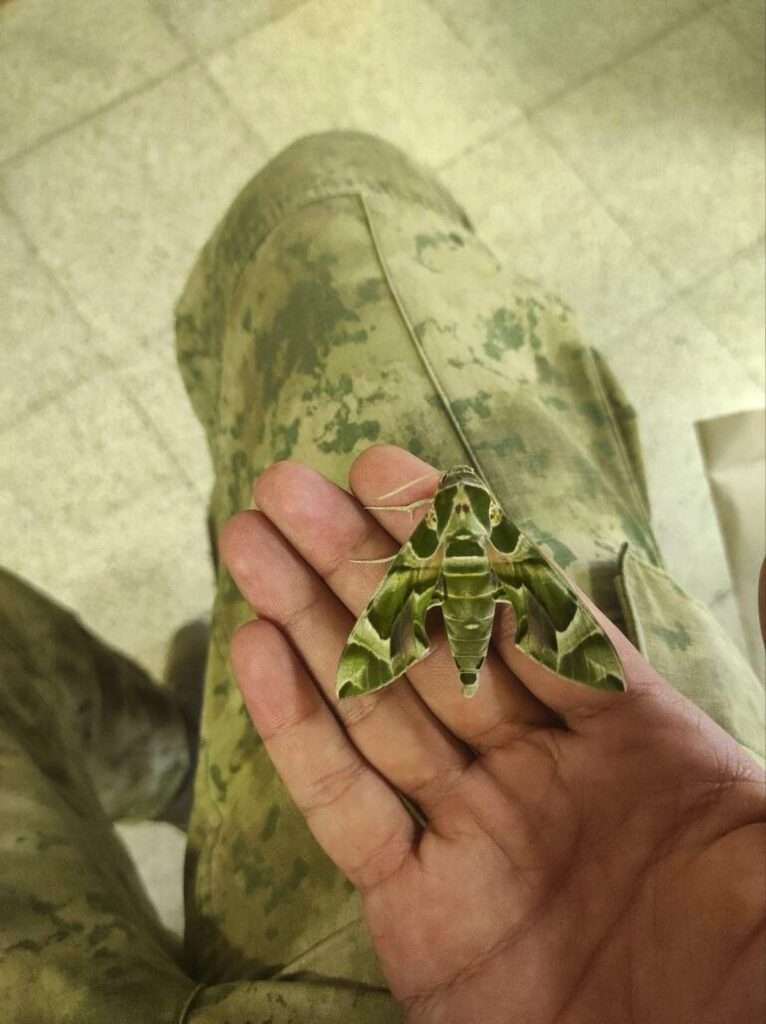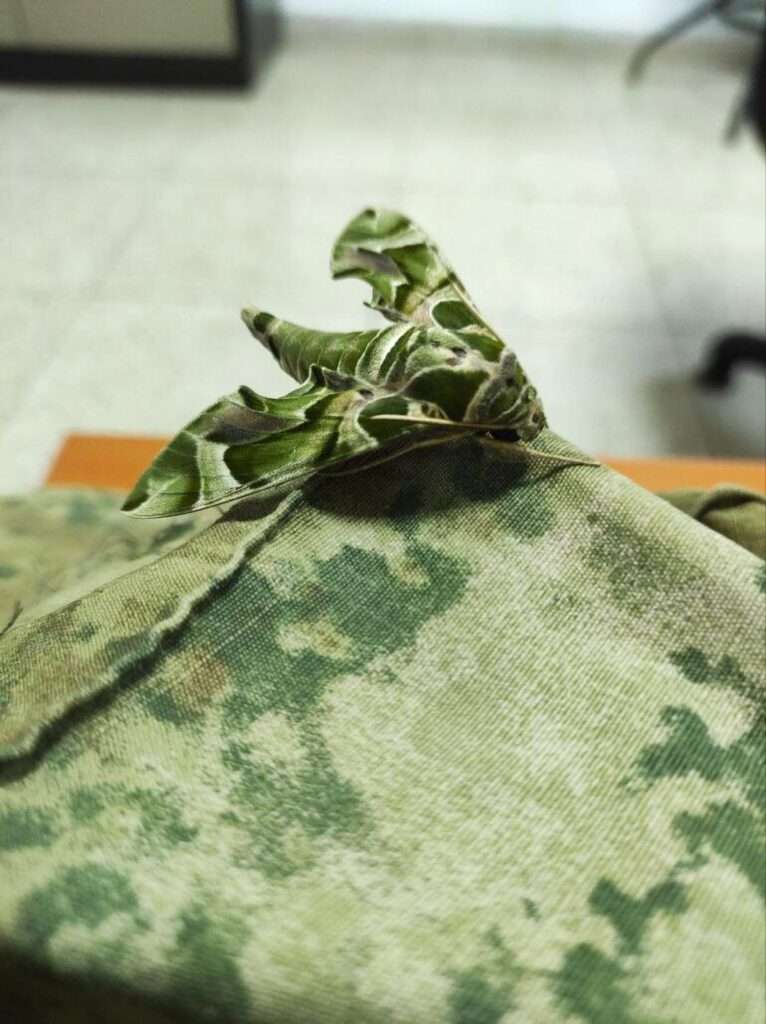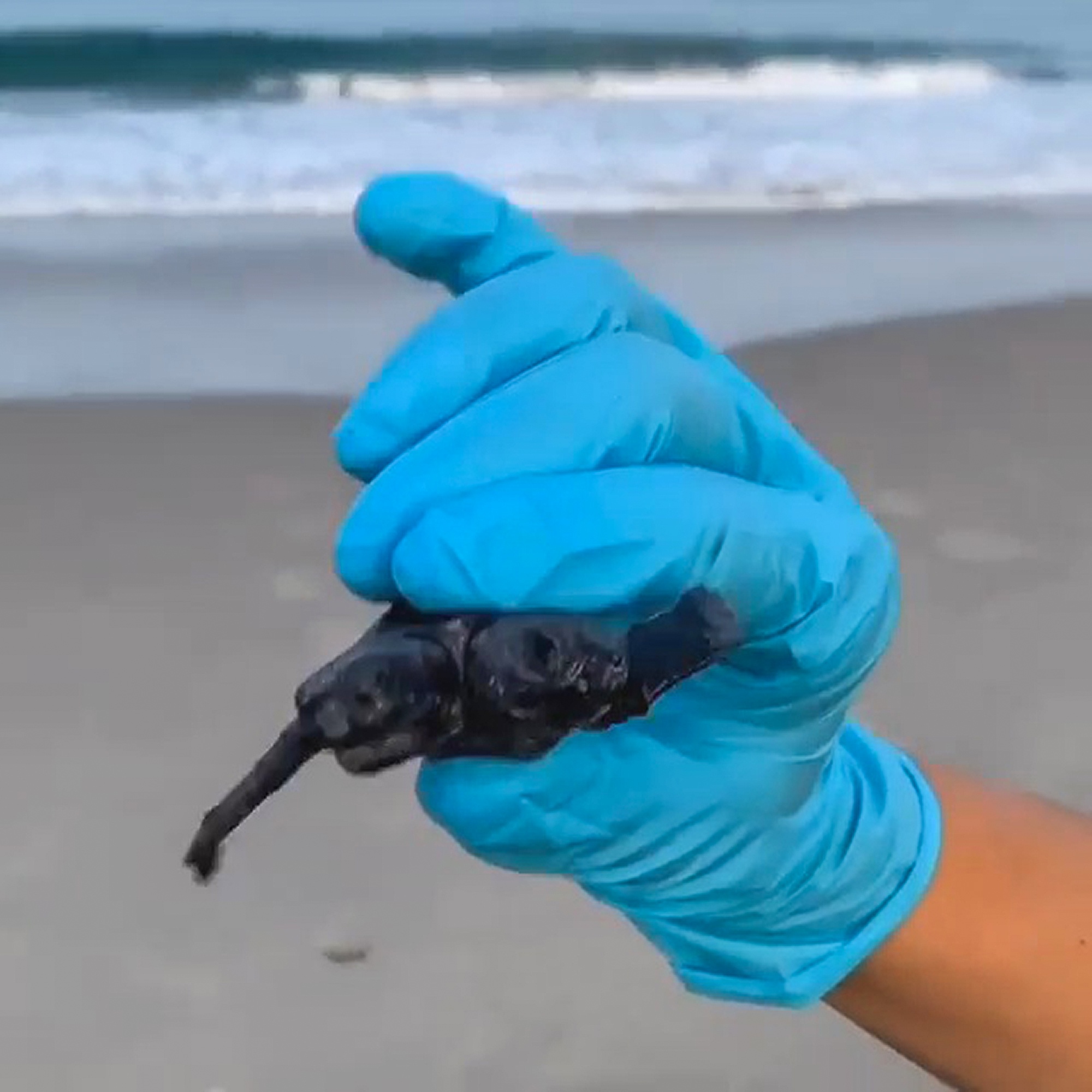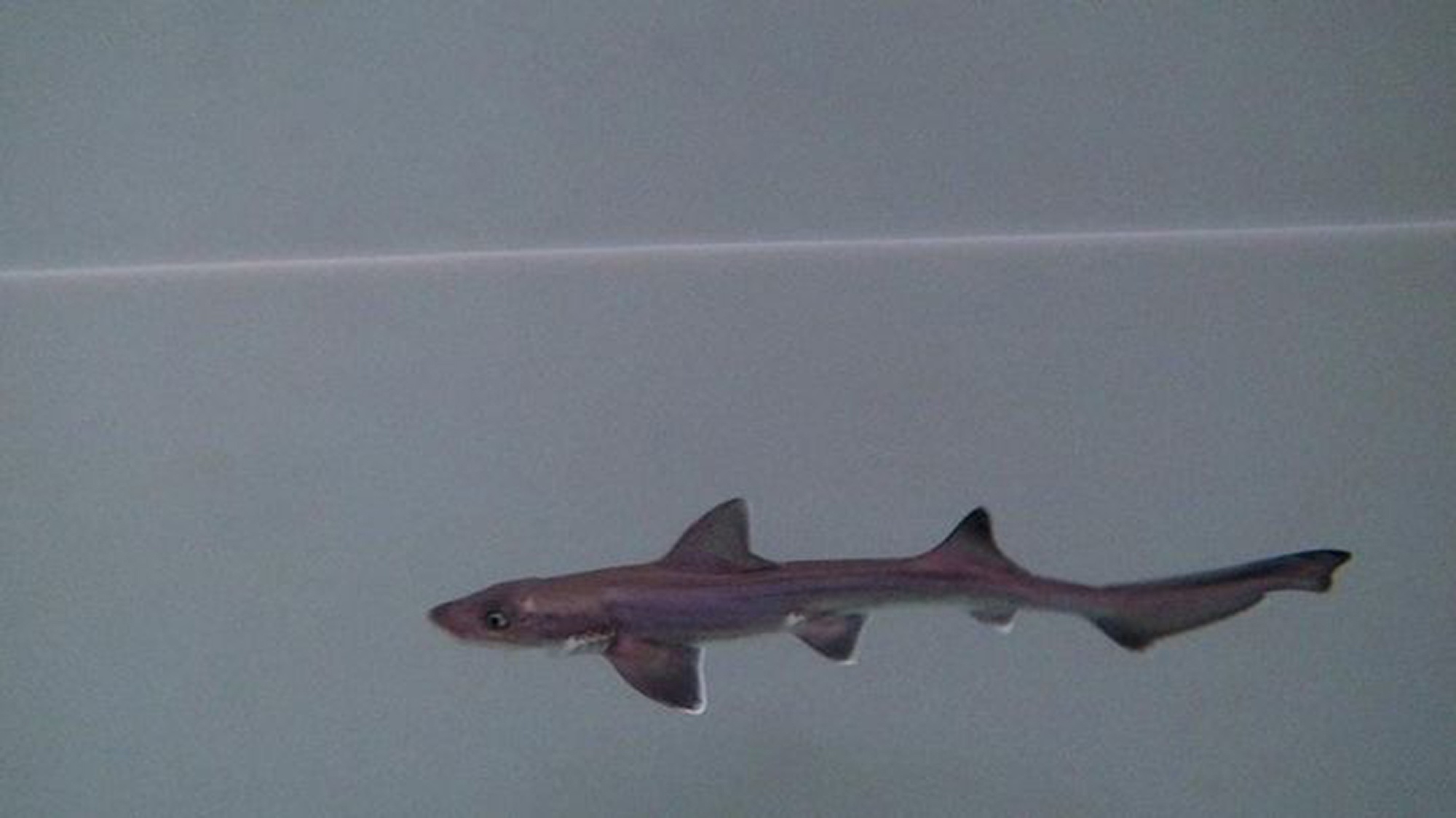This is the now you see it now you don’t moment when a soldier finds a huge camouflage-patterned moth hiding in the pattern of his combat uniform.
The baffled Turkish squaddie was mesmerised at how the moth simply disappeared when it settled on his own camo battledress.
After he sent a video to experts at Turkey’s University of Dicle the insect was identified as an oleander hawk-moth.
The species, daphnis nerii, is usually found all over Africa, Asia and Hawaii but migrates to eastern Europe in summer.
Just like military camo, the moth’s markings help keep it safe by fooling predators looking to make a meal of it.
But although the huge moth is harmless, warned biologist Dr Ali Satar, its catapillars can be poisonous.
Dr Satar, head of the university’s zoology department, says the moth’s caterpillars feed mainly on oleander leaves, a highly toxic plant.

And while they are immune, they can spread the poison through hairs on their back/
Dr Satar said: “They feed on the leaves of the oleander plant, which is toxic and poisonous to humans, and they are immune to it.
“Of course, how they have become immune to the poison is still being scientifically researched.
“These are interesting creatures. Some of them have hairs in their caterpillar form, they can be poisonous.
“It would be better for citizens not to touch them or take them in their hands.”
Dr Satar told how the the adult moth’s markings keep them safe.

He said: “They can camouflage in nature due to their colors and patterns.
“They can protect themselves from predatory insects and birds through disguise.”










